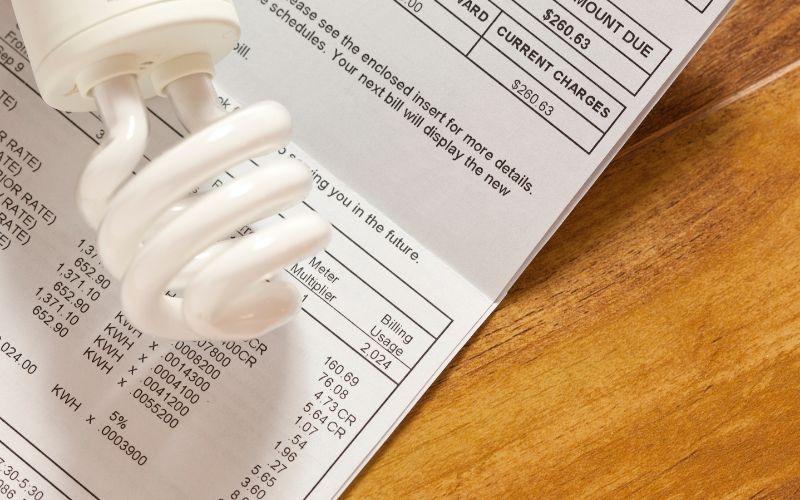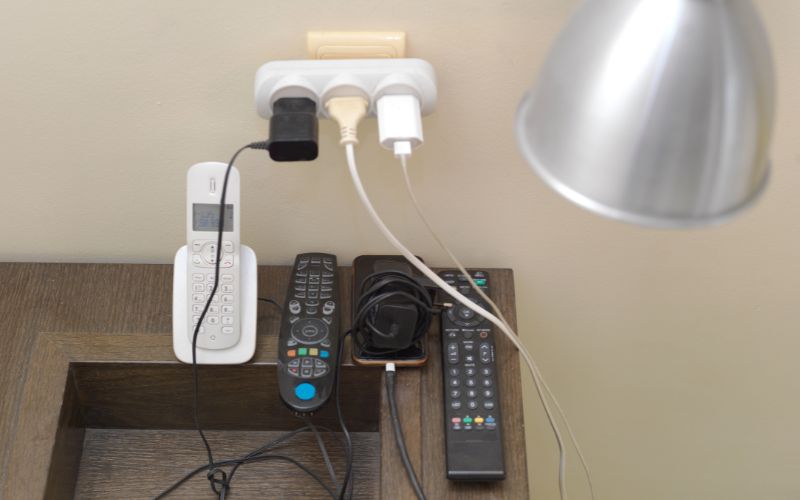People are understandably becoming more conscious of their energy use, trying to make sure that they aren’t wasting money on electricity when they don’t need to.
But it can be hard to judge how well you’re doing at saving energy if you don’t have something to measure up against. This is why you might be interested in learning about the average electricity bill for two people.

An estimated average electricity bill for a 2-person household in the United States is $117 per month. However, this can vary quite a lot depending on the type of property and where in the country you live.
That’s the average bill as given by the US Energy Information Administration for all properties, so that covers not just homes with two people, but also families and those living alone.
What we can do though, is break it down by the different types of property and the different parts of the US, so you can make more of a calculated estimate of your own electricity bill.
So before being alarmed if your bill is much higher or lower than average, read on for a more detailed breakdown and to learn the average for your property type and state.
Property Type And Region
You might assume that more people = more electricity used, but that’s really not the case. A lot of what we use electricity for in our homes only varies depending on the space and the style of the property, rather than the number of people living there.
For example, air conditioning is one of the biggest consumers of power, but you don’t have more or less air to cool depending on whether you live alone, with a partner, or with a large family. Instead, it’s based on the number of rooms.
And the other major factor is where you live – the climate and style of living for your region will play a big part in how much cooling and heating you need.
So let’s look at a breakdown firstly of property type, and then by region:
| Property Type | Average monthly consumption | Average monthly cost | Average annual consumption | Average annual cost |
|---|---|---|---|---|
| Detached home | 988.79 kWh | $138.43 | 11865.5 kWh | $1,661.17 |
| Attached home | 690.06 kWh | $96.60 | 8280.75 kWh | $1,159.31 |
| Apartment (small building, 2-4 units) | 553.52 kWh | $77.49 | 6,642.25 kWh | $929.92 |
| Apartment block (5+ units) | 476.85 kWh | $66.76 | 5,722.25 kWh | $801.12 |
| Mobile home | 967.73 kWh | $135.48 | 11612.75 kWh | $1,625.79 |
So what does this tell us?
- You could cut your electricity bill in half by moving from a detached home into an apartment
- Apartments in taller buildings use less electricity than those with only a small number of units – probably due to the shared heat benefits of having multiple properties stacked
- Mobile homes use a lot of electricity despite their typical low square footage – likely due to the poor insulation
Now let’s look by region, taking an average of all property types:
| Region | Average monthly consumption | Average monthly cost | Average annual consumption | Average annual cost |
|---|---|---|---|---|
| Northeast | 684.25 kWh | $138.43 | 8211 kWh | $1,149.54 |
| Midwest | 797.25 kWh | $111.62 | 9567 kWh | $1,339.38 |
| South | 1157.92 kWh | $162.11 | 13895 kWh | $1,945.30 |
| West | 710.42 kWh | $99.45 | 8525 kWh | $1,193.50 |
From that, we can tell that it’s a lot more expensive to live in the South, which we can attribute to the higher costs of air conditioning. There may be other factors too, including fewer apartments and more detached homes, but the climate (and the need for air-con) will be a big factor.
You can find out more about consumption by home and region on the EIA’s website.
Suggested read: How Many kWh Per Day Is Normal?
The Cost Of Electricity
The place where you live doesn’t just affect how much electricity you consume. It also has a massive impact on the actual cost per unit of electricity as well.
The average cost of electricity in the US is around $0.14 per kilowatt-hour, although the scale is wide. Some states have a cost per kWh below $0.10 while Hawaii – the state with the highest – exceeds $0.30.
That’s a huge discrepancy, but it’s worth pointing out that the average consumption in Hawaii is much lower than in other states, at around 537 kilowatt-hours per month. The states where electricity is cheapest tend to consume around double that per customer.

What Uses The Most Electricity?
It can also help you to look at which devices and appliances in the home are using the most electricity. You can use this information as an estimated guide, tailoring it to you.
For example, you might not have a hot tub, but you know you’re going to have a TV in every room, so you should expect that to use more than the average consumption.
Or if you’re living somewhere with a relatively cool temperature throughout the year, you might save a lot since you barely need to use air conditioning.
| Category | % of consumption | Average consumption (based on average total consumption) |
|---|---|---|
| Air conditioning | 16.9% | 151.086 kWh |
| Space heating | 14.8% | 132.312 kWh |
| Water heating | 13.7% | 122.478 kWh |
| Lighting | 10.3% | 92.082 kWh |
| Refrigerators | 7% | 62.58 kWh |
| TVs and related | 6.9% | 61.686 kWh |
| Clothes dryers | 4.5% | 40.23 kWh |
| Ceiling fans | 1.8% | 16.092 kWh |
| Air handlers for heating | 1.6% | 14.304 kWh |
| Separate freezers | 1.6% | 14.304 kWh |
| Cooking | 1.4% | 12.516 kWh |
| Dehumidifiers | 1.2% | 10.728 kWh |
| Microwaves | 1.1% | 9.834 kWh |
| Pool pumps | 1% | 8.94 kWh |
| Air handlers for cooling | 0.8% | 7.152 kWh |
| Humidifiers | 0.6% | 5.364 kWh |
| Dishwashers | 0.6% | 5.364 kWh |
| Clothes washers | 0.4% | 3.576 kWh |
| Hot tub heaters | 0.4% | 3.576 kWh |
| Evaporative coolers | 0.3% | 2.682 kWh |
| Hot tub pumps | 0.1% | 0.894 kWh |
| All other misc | 13% | 116.22 kWh |
Most of these won’t change depending on how many people live in your home.
Whether you’re cooking dinner for one, two, or the whole family, the cooker will stay on for a similar length of time. Air-con is based on the size of the home, not the number of people.
Suggested read: The Average Electricity Bill For A 3-Bedroom House
But water heating will change because you’ll have more showers than a person living alone would. It’s the same with laundry too, two people have more to wash than a single person would – but less than a large family.

The Bottom Line
Generally, living with one other person isn’t going to have a huge difference on your electricity bill, but the type of home you live in will, as will the part of the country you’re living in.
It’s not really a practical solution for most people to move to a completely different region and downsize their home to save $1,000 a year on electricity, but it may influence some of your decisions, especially if you’re looking for your first home.
And at least now you can compare your current electricity bill against a similar average. Do you spend less, or more? If you spend a lot more, it might be time to look at ways you can cut back.
